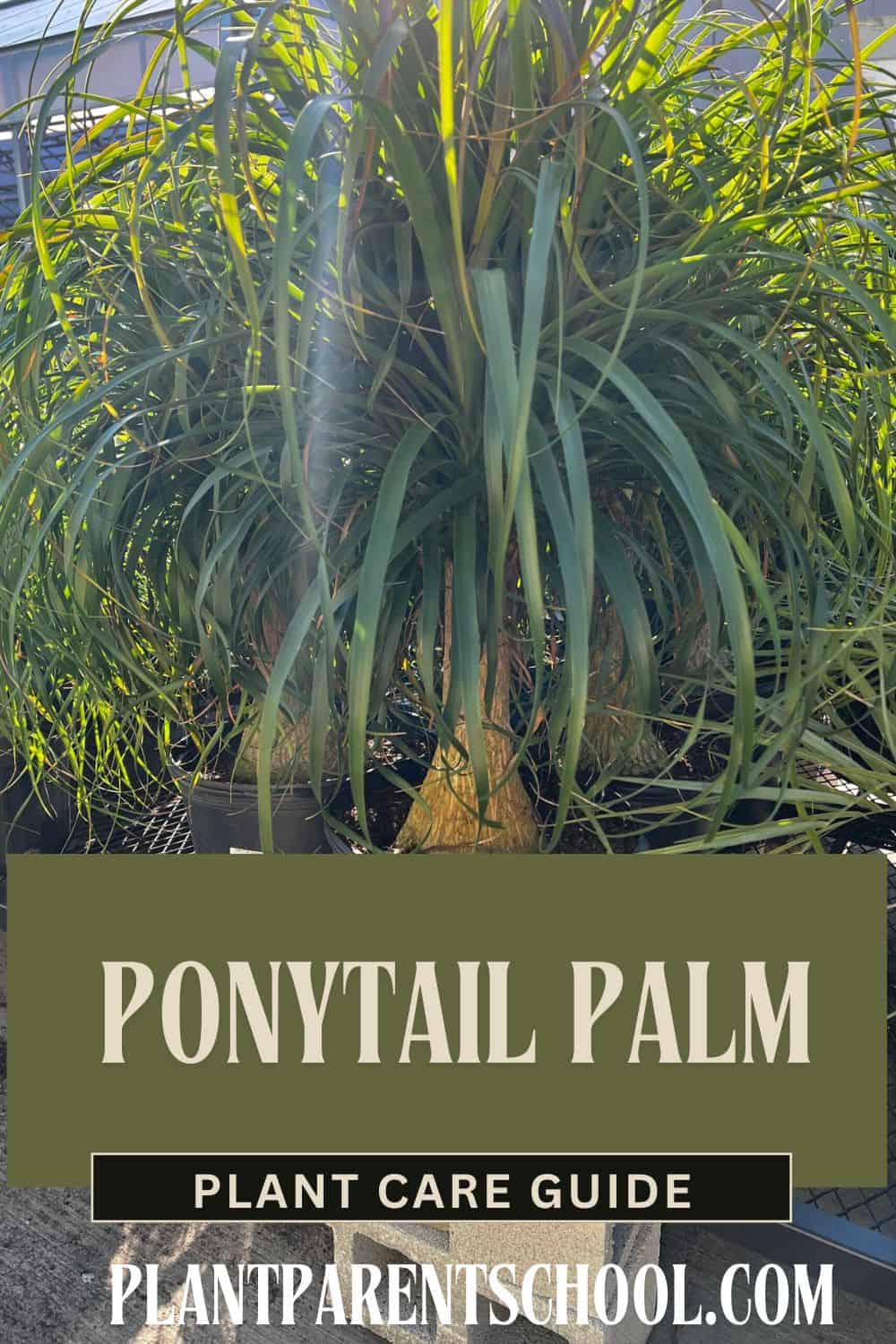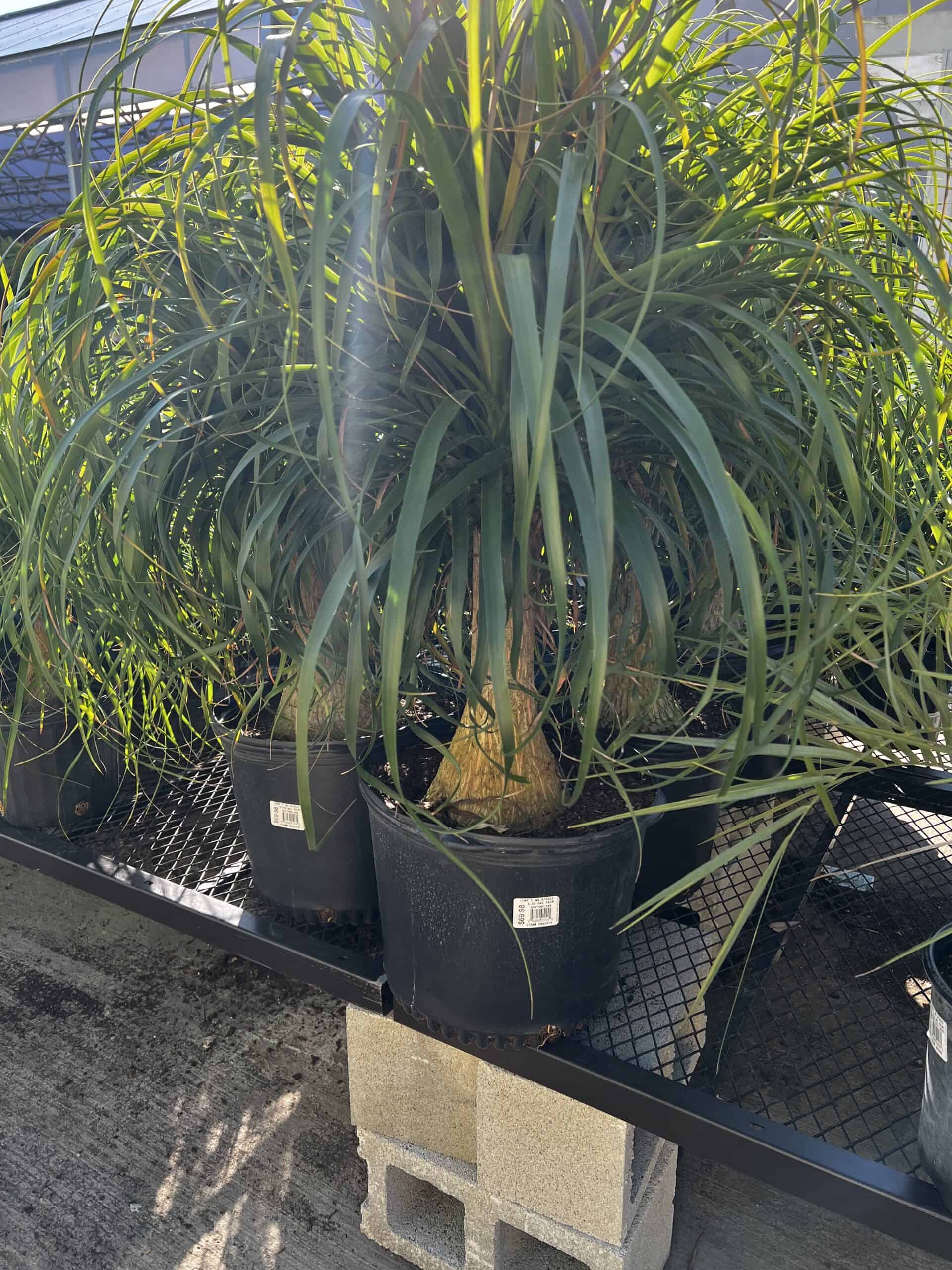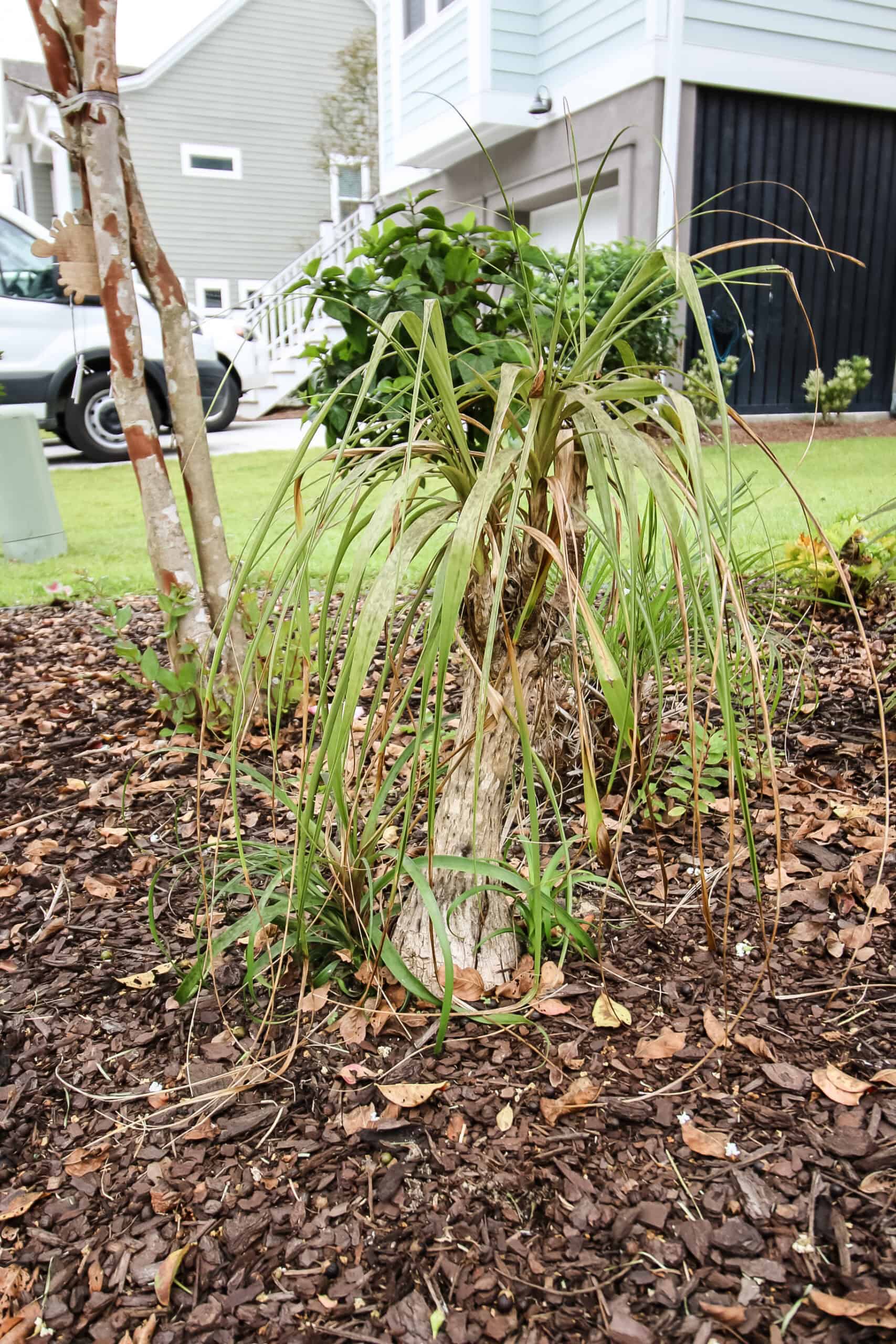The Ponytail Palm (Beaucarnea recurvata) is a unique and low-maintenance houseplant known for its bulbous trunk and long, curly, cascading leaves.
Despite its name, it’s not a true palm but rather a succulent!
🌟 Quick Look
- 🌞 Lighting Needs: Bright, indirect light; tolerates some direct sun
- 💧 Watering Needs: Infrequent; allow soil to dry out between waterings
- 📏 Mature Size: Up to 3-4 feet indoors (can reach 10 feet with time)
- 🌱 How to Propagate: Grown from seed; pups (offsets) can sometimes be separated
- 🚫 Toxic/Non-toxic: Non-toxic to cats and dogs
- 🌸 Flowering: Rarely flowers indoors

🏡 Ponytail Palm Care
This slow-growing plant thrives in bright light and requires minimal watering, making it perfect for beginners.
🌞 Lighting Needs
Ponytail Palms love bright, indirect light and can tolerate some direct sunlight. A south- or west-facing window is ideal.
If kept in low light, growth will slow down, and the leaves may become weak.
🚫 Too much direct sunlight can scorch the leaves, so introduce direct sun gradually.
💧 Watering Needs
- Water only when the soil is completely dry (typically every 2-3 weeks in warmer months, less in winter).
- Its bulbous trunk stores water, so it’s drought-tolerant and prefers underwatering over overwatering.
- Always use a pot with drainage holes to prevent water from sitting at the roots.
💡 Tip: If the trunk feels soft or the leaves turn yellow, you may be overwatering. If the leaves are crispy brown, increase watering slightly.
🌡️ Temperature & Humidity
- Ideal temperature: 60-80°F (16-27°C).
- Keep above 40°F (4°C)—cold temperatures can damage the plant.
- Thrives in dry indoor air; no need for misting!

🪴 Soil & Potting
- Use a well-draining, sandy soil mix, such as:
- Cactus/succulent mix or
- A blend of potting soil + sand/perlite for better drainage.
- Repot only when necessary (every 2-3 years), as Ponytail Palms enjoy being slightly root-bound. Choose a pot only slightly larger than the base.
🌿 Fertilization
- Feed once a month in spring and summer with a balanced, diluted liquid fertilizer.
- No fertilizer is needed in fall and winter.
🌱 Propagation
Ponytail Palms are typically grown from seeds, but mature plants sometimes produce pups (offsets) at the base.
How to propagate pups (if present):
- Gently remove the pup from the base of the parent plant.
- Let it dry for a day to prevent rot.
- Plant in well-draining soil and water lightly.
🚫 Is Ponytail Palm Toxic?
No! Ponytail Palms are non-toxic to pets and humans, making them a great choice for households with cats and dogs.

🛠 Troubleshooting & Common Problems
🍂 Why are my Ponytail Palm’s leaves turning yellow?
- Cause: Overwatering.
- Solution: Let the soil dry completely before watering again.
🌱 Why does my Ponytail Palm have brown leaf tips?
- Cause: Underwatering, low humidity, or too much direct sun.
- Solution: Adjust watering schedule and avoid intense midday sun.
🌴 Why is my Ponytail Palm’s trunk soft?
- Cause: Overwatering and root rot.
- Solution: Reduce watering immediately and check for drainage issues.
🐛 Pests (Spider Mites, Mealybugs, Scale)
- Solution: Wipe leaves with a damp cloth and treat with neem oil or insecticidal soap if needed.
🌿 Final Thoughts
The Ponytail Palm is a fun, hardy, and low-maintenance plant that thrives on neglect. With the right lighting, minimal watering, and well-draining soil, this unique houseplant can live for decades, adding a tropical flair to any space!
Want to Build Your Plant Care Confidence?
If you're ready to take your plant parenting to the next level, join Plant Parent School! This self-paced course will teach you everything you need to know about watering, lighting, troubleshooting, and more—so you can enjoy thriving houseplants with ease. Click here to enroll today!

